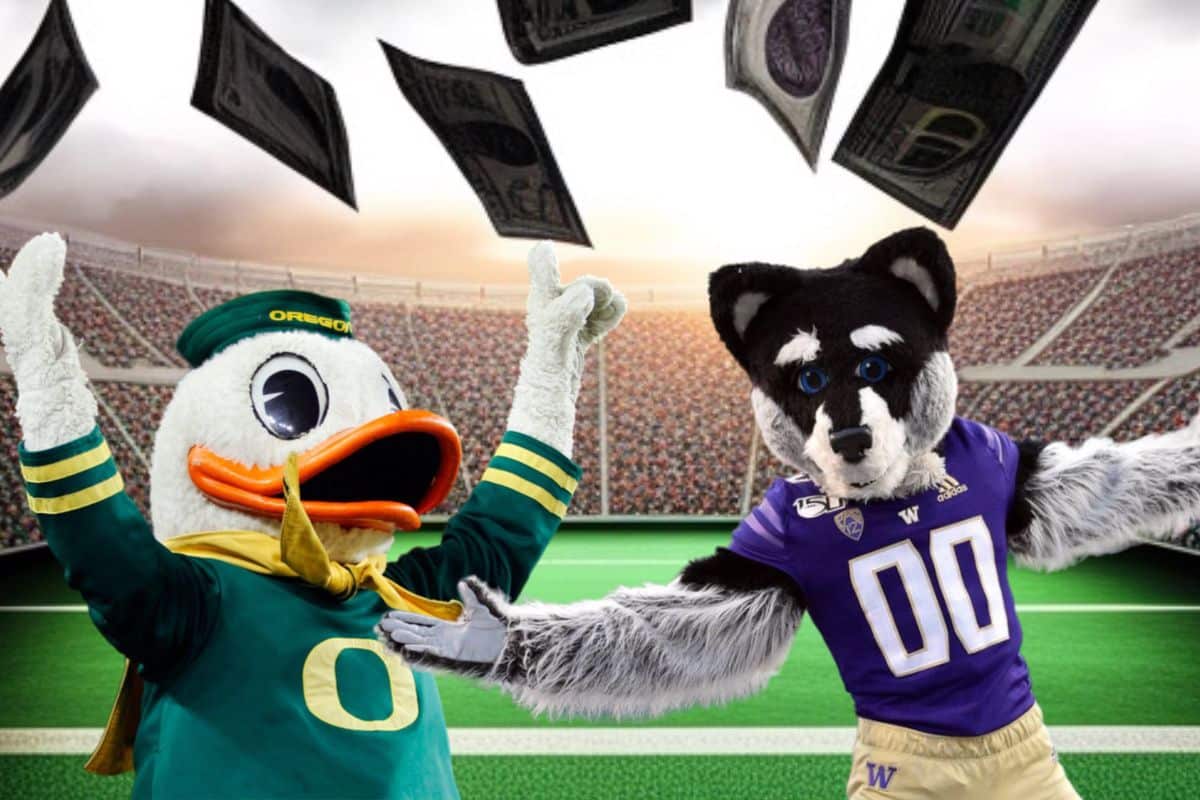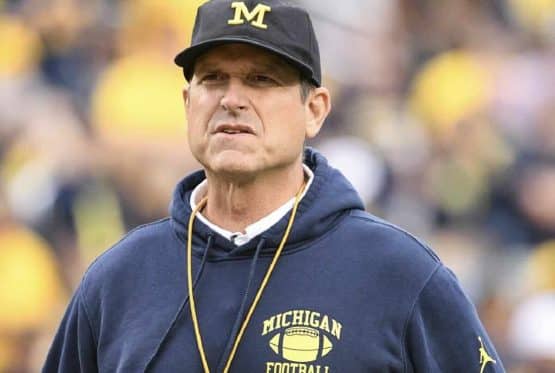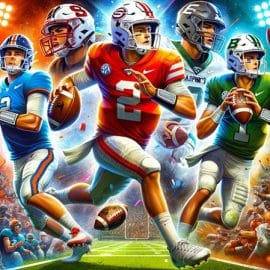In an era marked by changes and strategic shifts, college football is about to witness a landmark move. Leading the Pac-12 in revenue generation, the Universities of Oregon and Washington have positioned themselves to join the Big Ten, setting the stage for far-reaching impacts within collegiate sports.
The Revenue Leaders: Oregon Ducks and Washington Huskies
The 2021-22 college football season was noteworthy for Oregon and Washington, not merely for on-field performances but for the financial scoreboard as well. The two universities stood at the top of the Pac-12, generating a whopping combined revenue of $172M, as per data courtesy of Sportico.
Washington accounted for $91 million of this, while the Oregon Ducks accounted for approximately $81 million. The two top football revenue-generating schools in the Pac-12 now seem likely to head to the Big Ten.
Pac-12 2021/22 Football Generated Revenue
| Rank | School | Football Generated Revenue 2021-22 |
|---|---|---|
| 1 | Washington | $91,012,211 |
| 2 | Oregon | $80,903,569 |
| 3 | Utah | $74,016,997 |
| 4 | Arizona State | $62,039,582 |
| 5 | Colorado | $48,371,357 |
| 6 | Arizona | $46,965,736 |
| 7 | Washington State | $46,754,034 |
| 8 | California | $44,991,975 |
| 9 | UCLA | $41,757,878 |
| 10 | Oregon State | $38,292,381 |
| Total | $575,105,720 | |
| Average | $57,510,572 |
Big Ten’s Big Move
The move to the Big Ten provides both universities an opportunity for growth and aligns them with some of the top revenue-generating programs in college football. Here’s how the Big Ten stacks up:
Big Ten 2021/22 Football Generated Revenue
| Rank | School | Football Generated Revenue 2021-22 |
|---|---|---|
| 1 | Michigan | $131,403,197 |
| 2 | Ohio State | $109,176,080 |
| 3 | Penn State | $105,610,901 |
| 4 | Nebraska | $97,900,681 |
| 5 | Michigan State | $96,428,223 |
| 6 | Wisconsin | $92,786,795 |
| 7 | Iowa | $86,391,489 |
| 8 | Purdue | $62,465,667 |
| 9 | Illinois | $62,131,794 |
| 10 | Indiana | $59,883,654 |
| 11 | Maryland | $51,050,094 |
| 12 | Rutgers | $21,723,287 |
| Total | $976,951,862 | |
| Average | $81,412,655 |
Oregon and Washington stand at the top of the Pac-12. Their potential move brings the Pacific Northwest into the Big Ten fold, following the recent additions of USC and UCLA. It’s more than just a geographical change; it’s a strategic alignment that significantly enhances the Big Ten’s brand.
However, the terms reveal some financial trade-offs. The schools are set to accept potentially half of the Big Ten’s media revenue, amounting to around $65 million per institution per year. While this might seem like a reduction, it outstrips the Pac-12’s estimated proposal with Apple TV+, hovering between $20-25 million.
Broad Implications for Pac-12 and Big Ten
The Big Ten’s Opportunities:
- Market Expansion: New fan bases and markets in the Pacific Northwest.
- Financial Alignment: Oregon and Washington’s revenues align well with current Big Ten programs.
Challenges Facing the Pac-12:
- Revenue Loss: The top two revenue-generating schools’ exit could hinder the Pac-12’s overall financial health.
- Rebalancing Act: The departure will require strategic moves to ensure that the remaining schools continue to compete effectively.
A Game-Changing Shift
The decision to shift conferences is never taken lightly. The potential move of Oregon and Washington to the Big Ten goes beyond mere realignment. It’s a reflection of a changing paradigm in college football, where revenue generation, branding, and strategic alignment play as vital a role as touchdowns and tackles.
As negotiations reportedly approach their conclusion, the anticipation builds. The decision carries weight not just for these two universities but for the entire structure of collegiate football. This move could redefine both the Pac-12 and Big Ten, setting a new course in the competitive and ever-evolving landscape of college sports.
In a world where positioning and strategy are as vital off the field as on it, the transition of Oregon and Washington could be a defining play for both conferences. As fans, administrators, and athletes alike await the final whistle, this move underscores the fact that in college football, the game is always on – both on the gridiron and in the boardroom.
College Football Betting Guides 2025
- College Football Betting Guide – Best NCAAF Sportsbooks Ranked & Reviewed.
- Free NCAAF Picks – Check out Expert College Football Picks.
- The Latest NCAAF Odds – Compare the Best College Football Odds.
- College Football Moneyline Odds Explained – Learn How To Win NCAAF Moneyline Bets.
- College Football Spreads Explained – Guide on How To Win NCAAF Spreads Bets.
- College Football Futures Odds Explained – Expert Guide on How to Win NCAAF Spread Bets.
- College Football Totals Odds Explained – Guide on How to Win College Football Totals Bets.
Add The Sports Daily to your Google News Feed!







